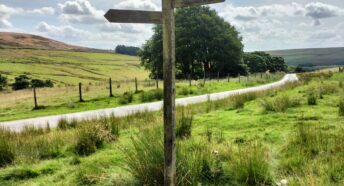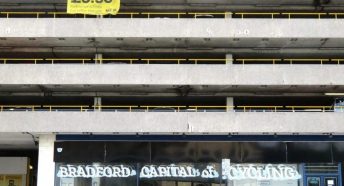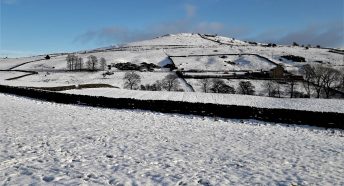How Can Local Communities Shape the Future of their Green Belts?
Jennifer Kirkby from Aireborough Neighbourhood Development Forum explains the difficulties of influencing Green Belt changes in her corner of Leeds.
‘Help shape the place you live,’ trumpeted the Coalition Government in 2012 on launching its shiny, new Localism Act and National Planning Policy Framework (NPPF), and Aireborough quickly took up the opportunity. So why, seven years later, are we forced into a legal challenge of the Leeds Site Allocation Plan (SAP) over the deletion of four Green Belt sites, that are unlikely to solve local housing need?
These are problems faced by many communities across the country.
First. Because, we have not been able to ‘shape the place we live’ in any meaningful way. Site Allocation Planning was hermetically sealed by Leeds City Council (LCC) away from Neighbourhood Planning. By undertaking its strategic Green Belt review in the tactical SAP, LCC effectively usurped the Neighbourhood Plan – which we pointed out. We simply were not listened too and our material evidence, supported by experts and the community, disregarded.
Second. The LCC case for exceptional circumstances for Green Belt deletions is built, in our view, on a flawed housing allocation. The ‘principle’ of Green Belt release was determined as the aspirational Leeds housing target of 66,000. This was divvied up between housing market areas (HMCAs) based on little more than land supply, and enshrined in the core strategy as indicative. There was no testing for Green Belt purpose, landscape character or sustainability; all such strategic considerations were left to the SAP. The SAP then proceeded on the basis that the only purpose of the Green Belt review was to accommodate the HMCA targets, rather than a strategic review of Green Belt purpose with regard to openness (NPPF para 79), or enhancement (NPPF para 81) or permanence beyond the plan period. District-wide alternatives that would enable greater use of brownfield land, and of greenfield land in less constrained areas, were not on the table.
Respecting and Enhancing Local Character and Identity
For a small HMCA whose market area converges with the Wharfedale part of Bradford, this targeting policy is disastrous. As rural-urban fringe Aireborough obviously has open land, but it was purposely planned as a tight Green Belt to stop urban sprawl and maintain local character when the Leeds Boundary was set in 2001 and confirmed in 2006. Further, as the north-east corner of the South Pennines Regional Area with a unique, hilly, millstone grit landscape and protected habitats our natural capital value is high, but under threat. Turning to housing need, the past 17 years have seen numerous mill sites redeveloped with predominantly 4-5 bed detached for the incoming families of ex-singles from Central Leeds. This has left an unbalanced housing stock. There is need for specific housing types: small properties for downsizers and young couples, plus retirement housing; housing types suited to the remaining small brownfield sites, rather than large tracts of Green Belt. It is crucial all land is used wisely, yet proposals are already circulating for the deleted Green Belt sites comprising 4-5 bedroom housing, for which there is no need. All this evidence is unheeded in the Leeds SAP, but is outlined in the Aireborough Neighbourhood Masterplan, supported by the Academy of Urbanism.
‘Fair Shares’ is Poor Planning
Our attempts to draw attention to Aireborough’s predicament have been dismissed on the basis that its 3% share of the total Leeds housing target is a drop in the ocean. In 2017, Government housing targets showed the Leeds target was too high. This led to a hurried reduction in planned Green Belt site allocations in a ‘stop-gap’ SAP. The method chosen for this reduction was ‘Fair Shares’ – each HMCA having a proportionate reduction. This did not allow consideration of whether the Green Belt’s purpose and integrity in one HMCA was under greater pressure than in another.
Thus, what should have been a comprehensive Green Belt Review – directing development in line with spatial strategy to where it least impacted Green Belt purpose – became, a selective Green Belt review restricted by HMCA targets. No review was done of the cultural and environmental value of the affected land. This was not the view in the SAP Inspectors, who concluded that the Green Belt Review was comprehensive because no available site had been excluded; and as the site selection process showed no reasonable alternative within each HMCA, the exceptional circumstances were demonstrated. Our concern now is that two months after the SAP was adopted LCC adopted a revised Local Plan with a reduced housing target to 2028 but with an extended period to 2033. As the Aireborough HMCA housing target remains at 3%, more GB will be required – making a mockery of the idea of permanence of the Green Belt Boundary.
Green Belt ‘s Natural Capital is Being Wasted
Sadly, our experience is not unique. CPRE’s October 2019 Report ‘Space To Breathe’ shows that in spite of Government assurances, more Green Belt than ever is disappearing in Local Plans; with some authorities coming back a second time. As we have done locally, CPRE point out the need to value the natural capital potential of the Green Belt and how environmental concerns for biodiversity, climate adaption, food production and wellbeing mean this value of this stock is rising. They also demonstrate that Green Belt sites are not providing the type of homes needed – in line with our experience. CPRE suggest that assessment of exceptional circumstances is too lax. When we contacted the Ministry of Housing, Communities and Local Government (MHCLG) for any available analysis, we found that exceptional circumstances are not categorised. How can Green Belt policy be effective if no monitoring is done?
Making Our Voices Heard
After making the best planning case we could for our corner of the South Pennines, the only course left was to ask for a Judicial Review. This is expensive, and not easy. But a key benefit would be paving the way for the improvements CPRE highlights. Green Belt is a valuable resource to be managed for the best outcomes, but is being squandered. We also hope it gives more weight to neighbourhood planning groups who want to responsibly ‘shape the place they live’.









